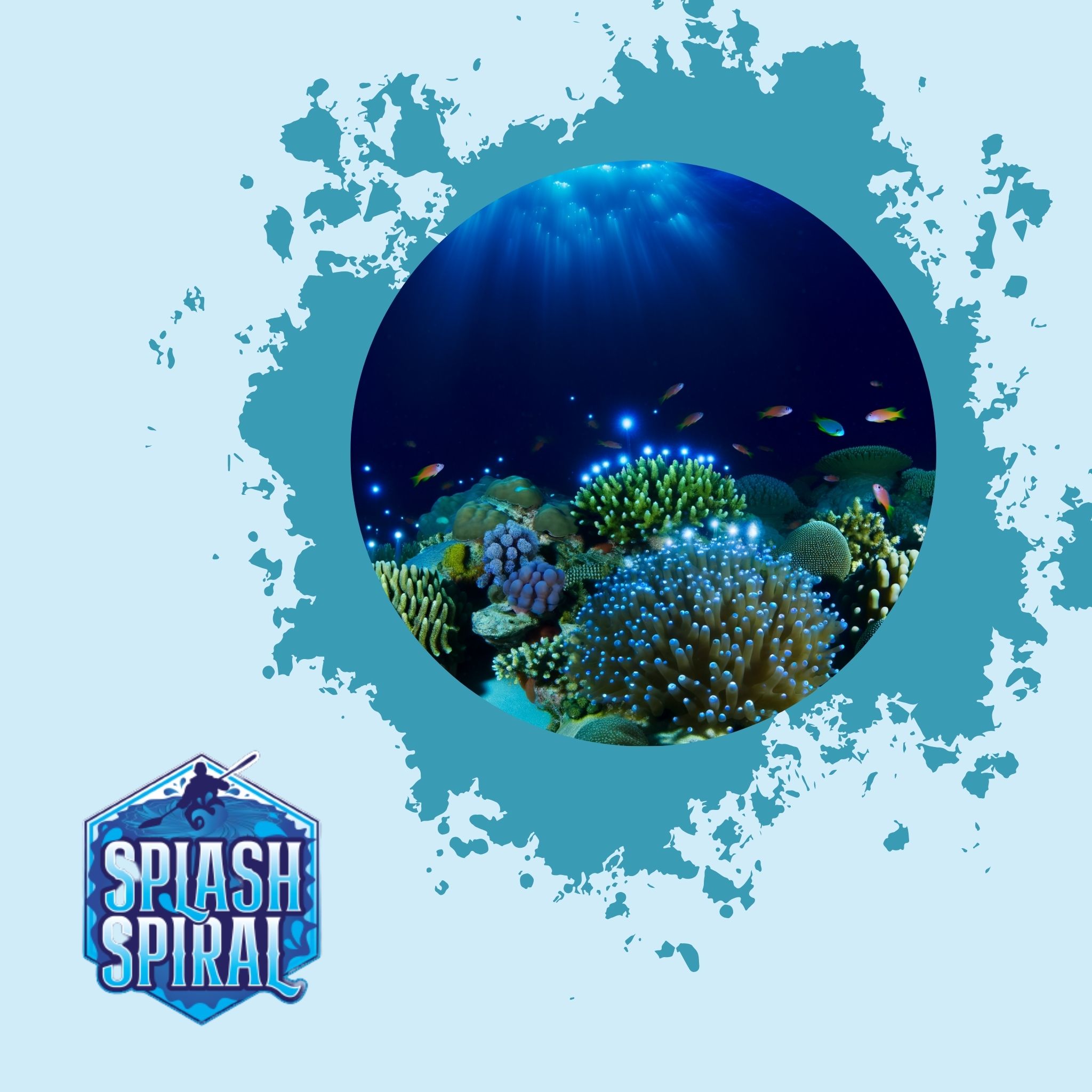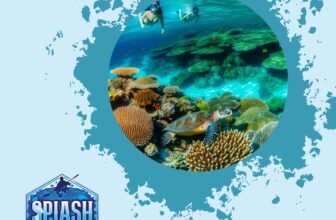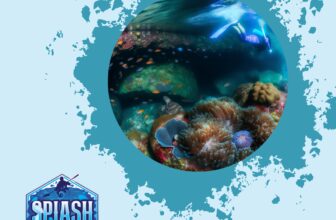
Coral spawning events hold a unique charm for those diving enthusiasts yearning to witness one of nature's most spectacular underwater events. Imagine diving into the depths at night and observing a synchronized dance of reproductive release. These coral spawning events are not only vital for reef health but also offer an unparalleled diver experience. This guide will break down the essentials for beginners wanting to witness coral reproduction and understand its significance.
Introduction
Coral spawning is one of nature's most astounding spectacles, where corals release their eggs and sperm into the water in a highly synchronized manner. This event is a critical phenomenon for reef ecosystems as it ensures the continuation and genetic diversity of coral populations. For beginner divers and those looking to start exploring the underwater world, witnessing coral spawning can be a transformative experience that deepens your appreciation for marine biodiversity.
The universe beneath the waves is intricate and dynamic, and the act of spawning is a testament to the life's resilience and interconnectedness. Imagine being surrounded by millions of tiny, glowing particles drifting lazily in the currents, a living snowstorm in the ocean's depths. As a diver, experiencing this nocturnal marvel not only provides a spectacle but also instills a profound understanding of the delicate balance that sustains our planet's marine ecosystems. By understanding coral spawning, you'll gain insights into the fragility and beauty of these underwater habitats, making each dive not just an adventure, but a step towards becoming a steward of the seas.
What is Coral Spawning?
Coral spawning is an awe-inspiring natural phenomenon where corals simultaneously release their eggs and sperm into the water column, allowing for fertilization to take place externally. Think of it as a well-coordinated underwater fireworks display that happens on specific nights each year. This synchronized event is key to the reproductive cycle of corals and crucial for the formation and regeneration of coral reefs.
The Spawning Process
The process usually begins with numerous species of corals releasing tiny bundles of sperm and eggs—often referred to as "gametes"—into the water. These gamete bundles float to the surface where they break apart and mix, leading to fertilization.
Key Stages
- Release of Gametes: Corals release bundles of sperm and eggs into the water.
- Floating to Surface: These bundles float to the surface.
- Mixing for Fertilization: At the surface, the gamete bundles break apart and mix, allowing fertilization to occur.
Synchronization
What's fascinating is how these corals synchronize their spawning activities with such precision. Scientists believe that corals use environmental cues to coordinate their spawning, including:
- Water Temperature: Specific ranges are optimal for spawning.
- Moon Phases: Often aligned with full or new moons.
- Time after Sunset: Specific times are crucial for synchronization.
Benefits for Divers
For newbie divers, understanding the basics behind this synchronized spawning can significantly enrich their diving experience. By observing this natural marvel, beginners can gain insights into the intricate and delicate balance of marine ecosystems.
Insights for Divers
- Educational Value: Provides a deeper understanding of marine life.
- Ecosystem Balance: Highlights the importance of coral reefs in marine ecosystems.
Importance of Coral Spawning Events
Coral spawning is more than a breathtaking underwater spectacle; it’s the lifeblood of reef ecosystems. These synchronized events, where corals release their eggs and sperm into the water, are fundamental to the survival and expansion of coral populations.
Firstly, coral spawning contributes greatly to reef health. By releasing millions of gametes simultaneously, corals ensure genetic diversity, which is crucial for the resilience of coral populations. This genetic variation helps corals adapt to changing environmental conditions, such as rising sea temperatures and increasing ocean acidity. It’s nature’s way of building a robust, adaptable marine community capable of withstanding stressors.
Moreover, these spawning events play a pivotal role in marine biodiversity. The larvae produced during spawning drift with ocean currents, eventually settling in new locations where they grow and form new coral colonies. This contributes to the spread of coral reefs, which are home to about 25% of all marine species despite covering less than 1% of the ocean floor. Essentially, when corals thrive, so does a multitude of marine life, from tiny plankton to larger predators. Coral reefs are akin to bustling underwater cities, teeming with life owing much of its vibrancy to successful coral spawning.
In addition to boosting genetic diversity and marine biodiversity, coral spawning helps maintain the structural integrity of reefs. Healthy coral growth and regeneration are indispensable in offering protection to coastlines, reducing the impact of waves, hurricanes, and erosion. This natural barrier preserves coastal habitats and human settlements alike.
For beginner divers, understanding the significance of coral spawning can enhance the appreciation of the delicate balance within marine ecosystems. By witnessing this natural phenomenon, divers gain insight into the intricate processes that sustain vibrant underwater worlds. Observing coral spawning isn’t merely a visual treat; it’s an opportunity to see firsthand the dynamic interplay that supports one of the ocean’s most important and beautiful realms.
As you prepare for your dive, remember that each coral spawning event you witness underscores the resilience and interconnectedness of life beneath the waves. Embracing this understanding elevates your diving experience from exhilarating adventure to informed exploration, fostering a deeper connection with the marine environment.
How to Prepare for Witnessing a Coral Spawning Event
Preparing to witness a coral spawning event requires some planning and the right gear, but the payoff is experiencing one of nature's most incredible phenomena. Here's how to set yourself up for success.
Research
First, you'll want to do your homework. Coral spawning is a synchronized event influenced by water temperature, lunar cycles, and tidal patterns. Use online resources and local dive shops to identify the optimal locations and timing for coral spawning. Notable spots include the Great Barrier Reef in Australia and the Belize Barrier Reef in Belize, often occurring a few days after a full moon during warmer months.
Gear
Next, ensure you have the right diving equipment. Night diving is par for the course when it comes to witnessing coral spawning, so a reliable underwater light is essential. Make sure your diving suit, gloves, and other gear are suited for the local water conditions. For night diving, it's also crucial to have a backup light and markers that help you and your diving buddies keep track of each other in the dark.
Fitness
Finally, physical preparation can't be overlooked. Night dives can be more strenuous due to the limited visibility and the potential for cooler water temperatures. Regular cardiovascular exercise and strength training can help you stay fit and improve your stamina underwater. If possible, practice night diving techniques during safer, more controlled conditions before heading out to the reef.
Nailing these logistics might seem overwhelming, but they pay off in providing a smoother, safer, and ultimately more enjoyable diving experience. Consider also expanding your fascination with marine life by exploring "Cephalopod Intelligence: Amazing Behaviors Observed by Divers", where you’ll find captivating insights into other underwater marvels. Being prepared and informed allows you to witness coral spawning events without causing harm to these delicate ecosystems. So, lace up your fins and start prepping – an unforgettable dive awaits!
Best Locations to Witness Coral Spawning
For those ready to take the plunge into the mesmerizing world of coral spawning, choosing the right location is crucial. These natural spectacles, where corals release millions of gametes into the water in a synchronized event, unfold in some of the world's most renowned diving destinations. Here are a few top spots that promise an unforgettable experience:
Great Barrier Reef, Australia
- Description: As the largest coral reef system in the world, the Great Barrier Reef offers unparalleled opportunities to witness coral spawning. This vast underwater ecosystem supports an incredible diversity of marine life.
- Best Time to Visit: The annual coral spawning usually occurs after the full moon in November or December, depending on water temperatures and lunar cycles.
- Insider Tip: Book your diving trip well in advance and aim to dive with operators who specialize in night dives during spawning season. These experts can enhance your experience with their in-depth knowledge.
Belize Barrier Reef, Belize
- Description: Stretching over 300 kilometers, the Belize Barrier Reef is the second-largest barrier reef system in the world. This UNESCO World Heritage site boasts impressive biodiversity, making it a prime spot for coral spawning observations.
- Best Time to Visit: Look for coral spawning events in late summer, typically around August, when water temperatures are just right for this natural phenomenon.
- Insider Tip: Plan your dives around the southern cayes of Belize for optimal viewing. Areas like Glovers Reef and Lighthouse Reef Atoll are highly recommended for their vibrant coral ecosystems.
Red Sea, Egypt
- Description: The Red Sea is home to some of the most vibrant and diverse coral reefs on the planet. Its clear waters and unique marine life make it an ideal location to observe the annual coral spawning events.
- Best Time to Visit: Coral spawning usually takes place during the warmer months, around June to July, following the full moon cycle.
- Insider Tip: Sharm El Sheikh and Hurghada are popular dive hubs with numerous liveaboard options that allow you to explore multiple reefs during spawning season, enhancing your chances of witnessing this event.
Each of these locations not only offers a front-row seat to one of nature's most captivating events but also provides a rich diving experience that goes beyond coral spawning. Whether you choose the expansive Great Barrier Reef, the rich diversity of Belize, or the vibrant ecosystems of the Red Sea, you’re in for an underwater adventure that underscores the beauty and complexity of our planet's marine life.
The Role of Divers in Coral Spawning Events
Witnessing a coral spawning event is undeniably exhilarating, offering a front-row seat to one of nature’s most intricate spectacles. However, with this privilege comes the responsibility to observe without disturbing. Here’s how you can do your part:
Tread Lightly
Coral reefs are delicate ecosystems, easily disrupted by even the smallest of actions. During spawning events, this sensitivity is heightened. As a diver, practice buoyancy control to avoid brushing against corals, stirring up sediment, or causing any physical damage to the reef.
Lighting Etiquette
Bringing a reliable underwater light is essential for night dives, but it's crucial to use it judiciously. Bright lights can disorient marine life and disrupt the natural process. Opt for red filters or dim settings to minimize impact while still allowing you to witness the event.
No Touch Policy
Under no circumstances should you touch or collect corals or marine life during your dive. This zero-contact approach ensures that the spawning process proceeds undisturbed, maintaining the health and resilience of the reef. Remember, your role is that of an observer, not a participant.
Awareness of Surroundings
Keep an eye on your surroundings. A large group of divers can easily overwhelm a small area, particularly during such a sensitive time. Stay aware not just of the corals below but also of other divers around you, ensuring that everyone maintains a respectful distance.
Advocacy and Education
As a witness to this phenomenal event, you have the opportunity to become an advocate for coral reefs. Share your experiences and educate others about the importance of preserving these ecosystems. Utilizing resources like "Marine Snow: The Ocean's Hidden Food Web" expands your understanding of these complex systems and equips you with knowledge to spread awareness effectively.
By following these guidelines, you’ll not only enjoy a remarkable dive but also contribute to the ongoing health and vitality of coral reefs. Divers play a pivotal role in marine conservation, and mindful practices during events like coral spawning can make a significant difference. Take the plunge, marvel at the wonders beneath, and leave the ocean as pristine as you found it.
Night Diving: Essential Skills and Safety Measures
Night diving opens up a whole new world under the sea, and it’s especially thrilling during coral spawning events. However, diving in the dark comes with its own set of challenges and requires specific skills and safety protocols. Here’s what you need to know to ensure your night dive is both awe-inspiring and safe.
Navigation Tips
Navigating underwater at night can feel disorienting, but sticking to a few core principles helps:
- Use Landmarks and Natural Features: Familiarize yourself with distinctive landmarks or features in the dive spot during daylight to use as reference points at night.
- Deploy a Navigation Line: Consider using a reel and line to establish a path you can easily follow back to your starting point.
- Stay Close to Your Group: Keep within an arm's reach of your dive buddy or group to avoid losing each other in the dark.
Communication Signals
Effective communication underwater becomes even more critical when you can’t rely on daylight. Adopt these strategies to keep in touch:
- Light Signals: Use your underwater light to signal your position or intentions to your dive buddy. Common signals include:
- Slow circles to indicate "OK."
- Quick flashes to get attention.
- Hand Signals: Standard hand signals for "OK," "Problem," and "Ascend" should be practiced often, ensuring they are clear and easy to see in the beam of your light.
- Frequent Check-ins: Regularly check on each other’s status and position to prevent miscommunication and ensure everyone’s safety.
Safety Measures and Protocols
Diving at night requires a heightened sense of awareness and adherence to safety protocols. Here’s how you can prepare:
- Gear Check: Double-check all your diving gear before the dive.
- Ensure your underwater light has fully charged batteries.
- Carry a backup light.
- Plan Your Dive and Dive Your Plan: Review the dive plan with your group, including dive time, maximum depth, and emergency procedures. Stick to the plan rigorously.
- Surface Signaling Devices: Equip yourself with surface signaling devices, such as:
- A whistle,
- SMB (Surface Marker Buoy),
- A strobe light,
These are essential in case of separation from the group.
- Buddy System: The buddy system is a lifeline during night diving. Maintain constant communication and keep your buddy in sight at all times.
By honing these skills and staying alert to safety measures, you’ll be well-prepared to witness the mesmerizing spectacle of coral spawning without compromising your safety. Ready yourself for a dive into the unknown and enjoy the marvels that await beneath the moonlit waves.
Reef Health and Environmental Conservation
Coral spawning events serve as critical indicators of reef health. When corals successfully spawn, it suggests a thriving, well-balanced ecosystem capable of sustaining diverse marine life. As a beginner diver, understanding this correlation enhances your appreciation and commitment to preserving these fragile underwater habitats.
One of the primary ways you can contribute to reef conservation is by adopting eco-friendly diving practices. Start by ensuring that you maintain proper buoyancy to avoid accidentally damaging corals. It's also important to keep a respectful distance and avoid touching or disturbing marine life. These small, conscientious actions can have a significant positive impact on reef health.
Another vital aspect of contributing to environmental conservation is staying informed. Engage with scientific research and participate in local conservation projects whenever possible. Knowledge empowers you to make informed decisions and advocate for practices that protect coral reefs. Visiting online resources like the "Scuba Diving" and "Diving" sections can provide you with up-to-date information and essential tips on reef conservation.
Finally, as a member of the diving community, you have the opportunity to inspire others. Share your passion and commitment to reef health with fellow divers and novices. By promoting responsible diving and conservation efforts, you help create a ripple effect that extends beyond individual actions, fostering a collective movement dedicated to preserving marine ecosystems for future generations.
Personal Experiences: Stories from Experienced Divers
Every seasoned diver has that one experience they could recount a thousand times and still find it hard to fully capture its essence—the moment they first witnessed coral spawning is often that story. Year after year, the act of plunging into the mysterious depths at night keeps becoming an enchanting tradition for many.
Carla's First Coral Spawning Event
Take Carla, a diver with five years of experience, who recalls her first coral spawning event at the Great Barrier Reef:
"It was like watching an underwater snowstorm," she said. "I remember being enveloped by tiny coral 'eggs' and 'sperm' drifting in the current, illuminated by my flashlight. It felt almost otherworldly and profoundly serene at the same time."
For Carla, the synchronization and beauty of the event fostered a newfound respect for the fragility and complexity of coral ecosystems.
Diving Experiences Around the World
David's Experience in Belize
David, a marine biologist turned diving instructor, experienced coral spawning at Belize Barrier Reef:
"I’d read about it, studied it even, but seeing it with my own eyes was something else entirely," he enthused. "It's surreal how the corals seem to know the precise moment to release their gametes. For someone new to diving, witnessing this can ignite a lifelong passion for marine conservation."
Aisha's Encounter in the Red Sea
Another poignant observation came from Aisha, an avid diver who encountered her first spawning event in the Red Sea:
"The reef came alive in a way I'd never seen before. You could sense the collective anticipation among the divers beforehand, which only heightened the magic of the moment," she reminisced. "Understanding that you are observing a key event in the life cycle of coral reefs really drives home the importance of protecting these ecosystems."
The Impact of Witnessing Coral Spawning
These firsthand accounts underscore the wonder and educational value of witnessing coral spawning. They highlight a common theme: the event leaves an indelible mark, turning a simple dive into an emotional and deeply personal experience.
As you gear up for your own adventures, let these stories remind you of the enchanting mysteries waiting just beneath the surface.
Conclusion
Coral spawning events encapsulate one of nature's most awe-inspiring spectacles, playing a pivotal role in sustaining reef health and marine biodiversity. For beginner divers, witnessing this phenomenon offers not only a deeper appreciation of underwater life but also a unique and rewarding experience that few get to observe firsthand.
By preparing properly, understanding the significance of these events, and knowing the best times and locations to dive, you can significantly enhance your marine adventures. Remember, though, with the privilege of witnessing such wonders comes the responsibility of conscientious diving practices to protect these delicate environments.
So equip yourself with the right knowledge, gear, and respect for the underwater world. Take the plunge, and become an informed advocate for coral reef conservation. Witnessing coral spawning is more than just a dive—it's a chance to engage with and contribute to the renewal of reef ecosystems. Dive in and be part of this incredible natural cycle!







